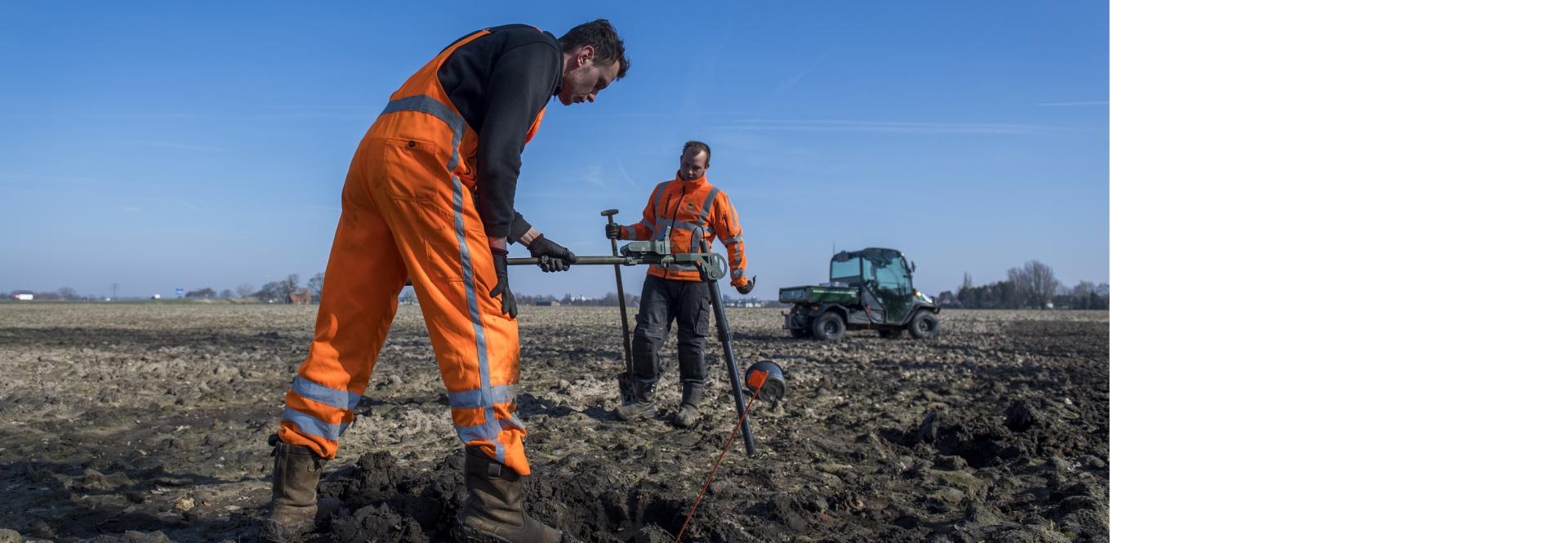Detection of Conventional Explosives
Because of war, conventional explosives (CE) are still present in the soil in many locations. Such unexpected circumstances bring the surrounding area in jeopardy.
In our work as hydraulic engineers, we would often come in contact with CE that were still in the soil. For this reason, the detection of conventional explosives has become one of our areas of expertise. We apply our expertise to this problem both on land and in the water.
Safety is something you want to guarantee for your surroundings. Safety requires an integral approach, an A to Z plan. Detection of conventional explosives requires a detailed approach. This begins with historical background research. Our specialist historians have access to a large historical archive and we have innovative 3D scanning methods to survey the soil. During the implementation our trained and certified staff survey your soil. If we find any object that might be an explosive, we approach the object and, if necessary, secure it. The actual clearing of explosives in the Netherlands is always the work of the Explosive Ordnance Disposal unit (EOD).
Impact on the surrounding area
UXO (UneXploded Ordnance) work generally attracts a lot of attention, especially in populated areas. Whenever detection of possible explosives comes up, local residents will have concerns and questions. We know the impact this work has on you as a contractor and on the local area. Our clients often have a responsible role in guaranteeing safety in the surrounding area. Therefore, it’s important that you know exactly what factors are involved. We have short lines of communication and a transparent organisation structure. We supervise and monitor the process and keep you involved in our operation.
Soil contamination or archaeological site?
Besides the danger of explosives, there are also other forms of contamination. An intervention in the water sediment to remediate contamination of soil/dredging spoil/silt can be combined with an operation to detect conventional explosives. The same is true for land-based soil operations. Depending on the types of CE found, dredging in accordance with WSCS-UXO directives can be combined with an intervention or remediation of the aquatic sediment. For implementation, we follow the requirements set forth in the CROW 132 and the BRL SIKB 7000 and related protocols.
Sometimes the soil contains something of archaeological value. Our historians will elucidate this. Archaeological investigation can be combined with WSCS-UXO investigation without damage to valuable historical objects.








